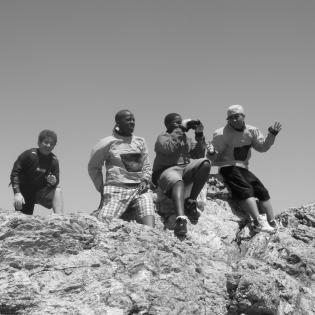Learning to Master: Some Ideas from Tradition (Private-Religious)
It would seem that contradictions abound in the Bible! Finding interpretations that allow these contradicting texts to coexist is both a traditional religious concern and a contemporary dynamic enterprise. It is also a pursuit that will determine how one comes to understand the role of Biblical imperatives in his/her personal life.
The learner will:
- cite two selected texts concerning humanity’s role in the world, paraphrasing the message of each.
- describe the circumstance of Biblical texts seemingly in conflict with one another.
- explain his/her individual interpretation of selected texts.
- Flour (3 Tbsp.)
- Water (3 Tbsp.)
- Matzo (single or box)
- Two clearjars or containers
- Attachment One: The Technique: Venn Diagram
- Attachment Two: The Texts
- Attachment Three: Taking It With You
As homework, the learners will share their completed interpretations of the two assigned texts with their families to stimulate family discussion as well as encourage the sharing of family- held beliefs, values, and religious perspectives. See also Extensions below.
Venn Diagrams: www.graphic.org/venbas.html
Instructions
Teacher Note: Shortly before class begins combine the flour and water to make a paste-like mixture. If made too soon the paste will ferment. Put paste into one of the see-through container and label the container- PASTE. Put the matzo into the other see-through container and label that container- MATZO.)
Anticipatory Set As the learners enter the classroom, have the two labeledclear containers in view on your desk or on a table for all to see. Allow the learners to look at these containers and make comments to you or others as they take their seats. Once everyone is settled, distribute a copy of Attachment One:The Technique: Venn Diagram to each learner and review the nature and use of Venn Diagrams and how this one will be used.
Teacher Note: A Venn Diagram is a technique often used to compare two things that are the same in some ways and different in others. It is usually made up of two partially overlapping circles. For the purposes of this lesson, one of the non-overlapping segments of the circles is labeled PASTE and the other is labeled MATZO. All those characteristics identified in PASTE but not evident in MATZO should be listed in the segment of the circle labeled PASTE; and all those characteristics identified in MATZO but not evident in PASTE should be listed in the segment of the circle labeled MATZO. The overlapping area is to be used to list those characteristics found in both of these items. Thus the overlapping area is labeled SIMILARITIES.)
Take time to review/explain Attachment One: The Technique: Venn Diagram and how it will be used in this lesson. Do one or two comparisons together as a class to get the learners started on their own.
Allow an appropriate amount of time for the learners to complete this activity before engaging them in sharing their observations.Teacher Note: The differences are, of course, numerous. The similarity is that both are made only of flour and water.
Following a brief sharing time, point out to the learners that often we can use many of the same ingredients and yet create very different recipes or products. Have the learners share some examples of how this is possible. (i.e. the ingredients in a cake can also be used to make a waffle; the ingredients used to make a car body can also be used to make a bike frame, the ingredients used to make a Fourth of July sparkler can also be used to make a bomb, etc.)
Inform the learners that this is also evident in the way people can look at the same event and see some different things; or hear the same thing and recall some things differently, or read the same religious text and interpret some of them differently. Say: “This lesson is about taking a pair of texts, our ingredients, and creating our own individual recipe/product. The recipe demonstrates how we each understand the ingredients, in this case, the texts."
Distribute a copy of Attachment Two:The Texts to each learner and read the texts as a class. Be certain that they understand the texts’ surface meaning.
Have the learners work independently to complete the first table.
Call on volunteers to share their interpretations of what each text says about G-d, about people and about their personal responsibility in the world, allowing for differing opinions.
Have each learner then complete the second table (entitled ANALYZE and INTERPRET) which indicates what he or she believes about what G-d and people want and need.
Again, call on volunteers to share their interpretations of what G-d and people want and need, allowing for differing opinions
To conclude this lesson give each learner a copy ofAttachment Three: Taking It With You and instruct them to complete their individual recipes demonstrating what they believe the two texts are saying. Teacher Note: This recipe can be demonstrated in a variety of ways, i.e., it could merely be named, the ingredient list could be provided, it could be illustrated or explained. The task is to convey one’s personal understanding of the imperative contained in the texts.
As homework, have the learners take their completed interpretations of these two texts home to their families to encourage and stimulate family discussion as well as to provide them with an opportunity to share family beliefs, values, and religious perspectives.
Learners will be assessed based on their classroom participation in discussion and activities as well as their completed Attachment Three: Taking it with You.
Philanthropy Framework
-
Strand PHIL.I Definitions of Philanthropy
-
Standard DP 06. Role of Family in Philanthropy
-
Benchmark MS.1 Identify how families contribute to the socialization of children.
-
Benchmark MS.2 Discuss the function of family traditions and role modeling in teaching about sharing and giving.
-
-
